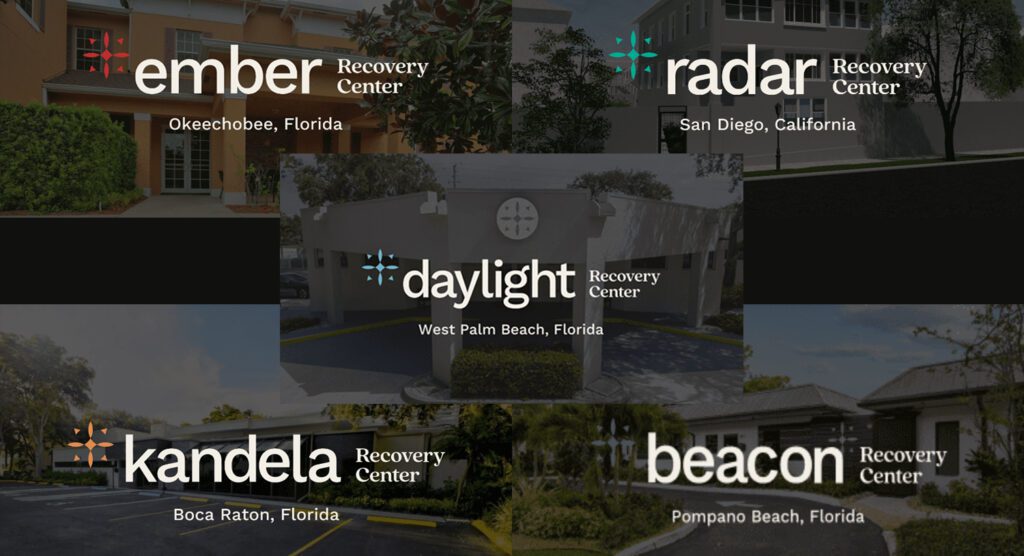Addiction
Home » Addiction
Drug and Alcohol Addiction
There are various substance abuse options available to people suffering from addiction and mental illness. With a variety of factors.
Alcohol Addiction & Abuse
Alcohol is a commonly consumed substance during social gatherings to celebrate special occasions and important milestones. Known as a psychoactive drug that affects the functions of the brain, alcohol addiction is a disease that affects people from all walks of life. Alcohol Use Disorder affects the functions of the brain and alters a person’s behavior. Signs of alcohol withdrawal are manifested through physical, behavioral, and psychological changes.
There is no cure for alcoholism. However, alcohol withdrawal symptoms can be managed. The first step to alcohol withdrawal syndrome treatment is detoxification. This is done in alcohol treatment centers after a licensed professional has conducted his assessment on the patient.
During the detoxification process, patients may receive medicine such as benzodiazepines, anticonvulsants, and antipsychotics to help control the alcohol intake. Alcohol withdrawal marks the beginning of the alcohol withdrawal timeline. Doctors will then assign the appropriate alcohol treatment method depending on how severe the symptoms of alcohol withdrawal are.
Alcohol withdrawal can be lethal and if done incorrectly. Never attempt to experiment with your own alcohol withdrawal treatment. Contact the nearest center for alcohol treatment near you to receive guidance on proper alcohol treatment.
Ambien Addiction & Abuse
It’s a prescription medication in the form of a pill, used in patients who have issues getting the sleep they need at night. It is used to treat insomnia but is generally only intended for short-term use, as there have been many cases of people getting dependent on the drug. An addiction to this drug can form in as little as two weeks. Many people don’t realize they even have an issue with it until they stop taking it and realize that they cannot sleep without it.
Often known to erase memory, Ambien has been called “a roofie replacement.” A prevalent side effect of taking this medication forgets entire nights or several hours at a time. Other immediate side effects include, but are not limited to: rapid heartbeat, nausea, vomiting, slow breathing rates, memory loss, inability to concentrate, disorientation, anxiety or depression, dizziness, confusion, and sedation. In addition, they are commonly sought after for the ability to hallucinate or “trip” while misusing this drug.
Signs and symptoms of Ambien addiction include: engaging in dangerous situations without any memory of them later. Ambien addicts might try refilling their prescriptions unusually often or way earlier than they should have. They are repeatedly taking more than prescribed, and they are even experiencing cravings for Ambien. In general, those with drug and alcohol addiction tend to isolate themselves from their friends and families and do self-sabotaging things to obtain more.
Barbiturates Addiction & Abuse
They are used by swallowing a pill or injecting a liquid. Known as a depressant, Barbiturates make the user feel slowed down, commonly resulting in a relaxed feeling. Generally, barbiturates are prescribed to treat seizures and epilepsy, anxiety, and insomnia. Phenobarbital is probably the most well-known barbiturate that is still being used today. It’s sometimes even used in treatment to recovering addicts and alcoholics as a detox drug.
Common side effects of barbiturates are dizziness or drowsiness, nausea, aggression, confusion, slurred speech, slowed thinking, or even hallucinations. Some people use this drug for fun as a way to reduce inhibitions. In other words, they would use this, and then they would feel free to do what they would naturally do if they weren’t thinking about its repercussions. As with other depressants or downers, this class of medication is sometimes sought after as a way to counteract stimulants or “come down.” The user will feel exhausted
Some street names for this include but aren’t limited to barbs, pennies, reds, or yellow jackets.
Benzodiazepine Addiction & Abuse
Benzodiazepines are the technical name of this group of prescription medications commonly used to treat anxiety, panic disorders, seizures, muscle spasms or tension, and insomnia. It comes in the form of a pill that can be taken by mouth or crushed and snorted. This is another drug that is generally sought after for its calming effects. Some of the more popular medications among this class of drugs are Valium, Xanax, and Klonopin.
Street names for these drugs include, but aren’t limited to, Zanies, bars, school busses, footballs, tranks, downers, chill pills, nerve pills, or k-pins. Benzos are also used to counteract stimulant drugs for the user to come down. Addicts may refer to this as “speed-balling or prescription speed-balling.” When used together with opioids, it can cause an overdose or even death. It is perilous to mix drugs without the supervision of a health professional. If abusing this medication, onlookers may notice slurred speech, confusion, drowsiness, or dizziness.
Benzodiazepine withdrawal can be hazardous and even life-threatening. Medical detox at a rehab center is the safest way to win the battle against Benzo addiction, followed by addiction treatment.
Cocaine Addiction & Abuse
Cocaine is an illegal stimulant. Cocaine increases energy and alertness. This illegal stimulant comes in a few different forms. Generally, a white powder is snorted or injected. It can also be smoked after being processed into a rock-like form, called crack-cocaine. It is very addictive.
When used, the person would feel a euphoric rush of energy and feelings of pleasure and satisfaction. In many cases, the use of Cocaine causes the addict to lose their appetite and feel like they don’t need to sleep or rest. Many people have reported that this drug helps them think and complete tasks quicker and more efficiently. The cocaine user would appear to be unable to sit or stand still from the outside. Repetitive use of this drug can cause the user to lose their connection to reality. They are saying and doing things that don’t make much sense to those around them.
Some common side effects of using Cocaine include paranoia, panic, mood swings, mania, depression, impaired judgment, irritability, abnormal behaviors. Cocaine addicts may also experience any of these physical side effects from headaches or chest pain, all the way to heart attacks or strokes. Some common street names for this drug include girl, base, blow, snow, powder, crack, white lady or female, nose candy, white dragon, etc.
Fentanyl Addiction & Abuse
Doctors prescribe Fentanyl for severe pain, used as a patch on the skin or a pill. This opioid and depressant is also sold illegally on the streets, generally as a white or off-white powder. It can be smoked or snorted, or injected by a needle. Also, it can be dropped onto blotter paper; some people even put it in eye droppers and nasal sprays.
More and more often, it is being reported that it’s being mixed with heroin where the user will feel like it’s a more potent batch of heroin. The smallest amount of this drug can produce a high, so it’s quickly becoming a cheaper option for those with drug and alcohol addiction. As with other opioids, the user will feel an increasing feeling of relaxation and slowed heart rate along with an intense feeling of euphoria.
Side effects of taking this drug are slowed breathing, passing out (or nodding), pain relief, extreme feelings of drowsiness, dizziness, vomiting or nausea, confusion, and so on. Common street names include fetty, apache, china girl, or china white.
Heroin Addiction & Abuse
This illegal depressant is generally sold in a white or brown powder or a dark tar-like substance and is primarily injected by a needle, smoked, or snorted through the nose. After use, the addict will generally feel like everything around and within them slows down. Their limbs will feel heavy, and a warm feeling will surge through their bodies.
Often the user will feel or appear very sleepy as a result. This is commonly referred to as “nodding out.” It would appear as if the person were alternating in and out of that tired state from the outside. One minute they seem to be awake and alert, and the next minute they seem to be asleep sitting or even standing up with their head hanging downwards or in a nod position.
Some heroin users tend to feel a severe itching sensation all over that won’t stop. Other immediate side effects the addict might experience include nausea or vomiting, along with a slowed heart rate, blurred vision or slurred speech, or extreme tiredness.
A tall-tail sign that an addict is using heroin is track marks, which are spots, sores, and scarring on the body (generally along their veins) left behind at common injection sites. When an addict injects the drug, it is also known as shooting or banging. Frequently these track marks are dark in color, and some of them will never go away. Some common street names are boy, h, smack, horse, china white, hero, black tar, etc.
Inhalant Addiction & Abuse
A variety of different drugs are grouped from the class of inhalants. Inhalants are mainly in this class of drugs because their only route of administering is through inhaling the fumes. Most commonly used by teens because of their easy availability, Inhalant addiction is less common than other drugs. However, it is still a genuine possibility as they have addictive qualities. Some commonly known inhalants are gasoline, spray paints, permanent markers, glues, and cleaning fluids.
Computer duster is another most widely used inhalant. The high of these drugs typically don’t last more than a few moments in which the user will experience different things depending upon what and how much they did. Some common side effects include feeling lightheaded, having hot flashes, or dizziness; the user may even hear or see things differently than they are. In addition, because the high only lasts a few minutes, the user often tries to do it repeatedly, which can be very dangerous.
Methamphetamine Addiction & Abuse
The scientific name, Methamphetamine, is a stimulant. Used in tiny doses, some doctors prescribe it as part of A.D.H.D treatment. It was causing the patients to become more able to focus and finish tasks. However, on the street, addicts take this drug primarily because when ingested, it makes you want to go faster. Generally, Meth comes in three different forms, the most common one being a white powder that tastes bitter and has no smell. Another common form is the almost transparent crystallized form. It can also be found in a pill form made from compressed powder.
Meth can be consumed in various ways, from snorting to smoking to insertion to injection. Depending on each of these different ways of consumption, when the drug reaches the brain varies. From swallowing (which is likely to feel the intense rush 2-3 hours after consumption) to snorting, smoking, injecting, or insertion, the user will feel the thrill of this drug within 2-10 minutes.
Methamphetamine Side Effects
Some common side effects of Meth are: appearing jittery or restless and unable to sit still, speaking fast or talking a lot, a rush of the euphoric feelings causing their energy level will increase. Some reports say the addict might even feel invincible while on the drug. You might hear of people addicted to Meth having “meth-mouth” from smoking it where they get sores on their mouth or inside their mouth and broken teeth.
A tall-tail sign of addiction to this drug would be sores or “pick spots” generally on their face and arms, sometimes covering their entire bodies. Over time, the addict may even lose the healthy color in their face, appearing gray or dull in color. In addition, there would be rapid weight loss due to an almost non-existent appetite. Also, it’s common for the addict to become very dehydrated, with no desire to care for themself.
Another thing that typically happens when someone is addicted to Meth is they tend to stay up for days at a time, which leads to extreme paranoia. In more severe cases, the user can even hallucinate and see or hear things that aren’t really there. The user will then say and do things that don’t make much sense. Messing with their sense of reality also creates confusion, anxiety, and mania in extreme cases. Common street names include: crank, ice or ice-cream, speed, go or go-fast, tina, no-doze, or crystal.
Opioid Addiction & Abuse
Opioids are a class of depressants used illegally as heroin and fentanyl and legally prescribed as Vicodin, Percocet, OxyContin, morphine, codeine, and many other medications. An opioid overdose can be reversed if somebody is there and can administer another drug called naloxone immediately. Treatment for opioid addiction has evolved dramatically over these recent years as both drug and alcohol addiction have increased.
Get confidential help 24/7.
If you or a loved one are suffering with drug and alcohol addiction, reach out to Flyland Recovery Network for addiction help.








